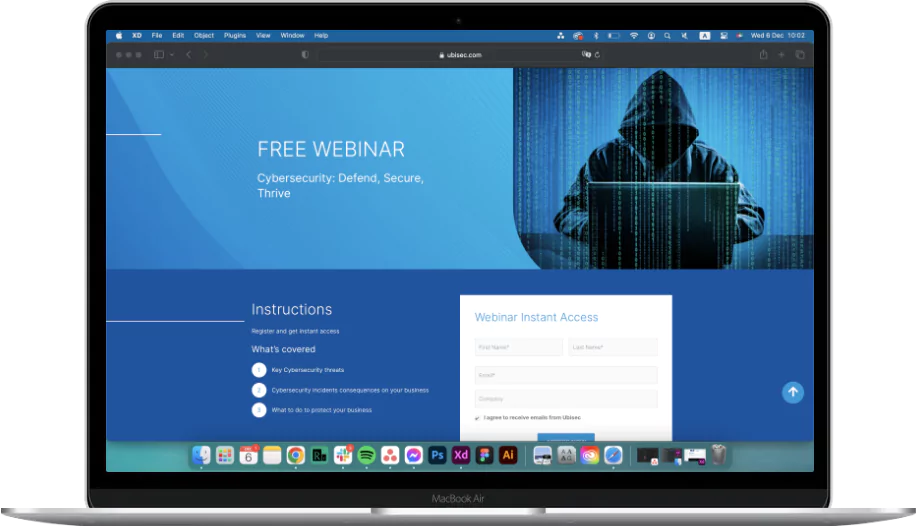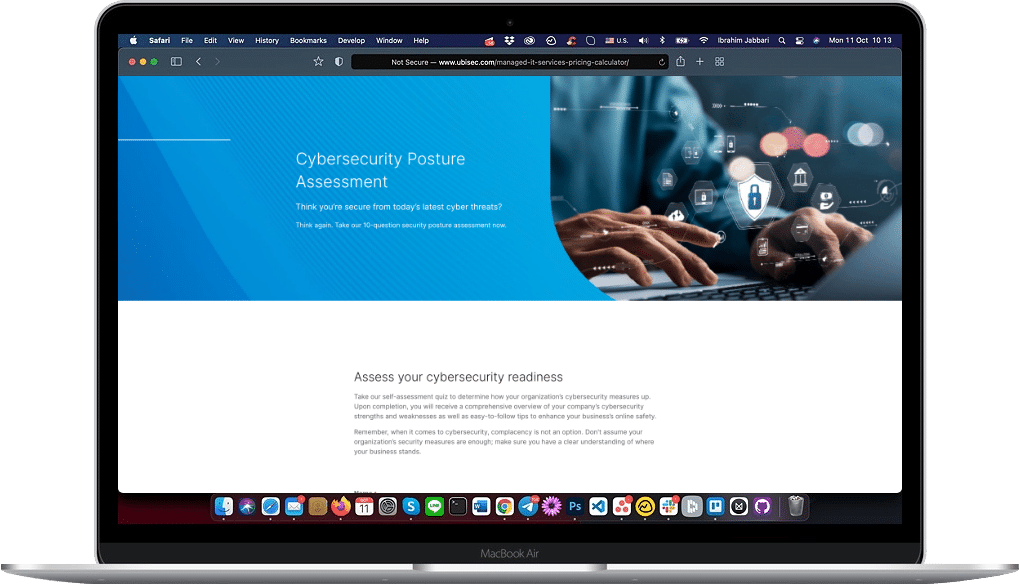More and more businesses are embracing cloud technology to enhance efficiency, foster collaboration, and drive innovation. However, as the reliance on cloud computing grows, so does the need for robust cloud security. In this blog post, we’ll delve into the fundamental concepts of cloud security, explore its significance in the digital age, discuss various types of cloud security threats, and layout best practices to fortify your cloud-based infrastructure.
So, let’s get started with the basics.

Understanding Cloud Security Basics
Cloud security encompasses a range of strategies and tools designed to shield cloud-based data and systems from cyber threats. These measures ensure your valuable digital assets’ confidentiality, integrity, and availability. Let’s break down some critical components of cloud security:
Data Encryption
At the heart of cloud security is data encryption, a process that has been used for centuries to transmit sensitive information securely. In cloud computing, data encryption involves transforming plain, readable data into a coded form known as ciphertext. This transformation makes it extremely difficult for unauthorized individuals to decipher the original data, even if they manage to gain access to it.
Data encryption is a robust line of defense against potential breaches in the cloud environment. Whether data is at rest (stored on cloud servers) or in transit (moving between devices and servers), encryption ensures that the data remains incomprehensible even if intercepted. Cloud service providers will typically manage the encryption keys used to encrypt and decrypt an organization’s data.
Access Control
Another crucial pillar of cloud security is access control. Think of access control as a digital bouncer that decides who gets entry to the exclusive party that is your cloud data. Access control governs who can access, view, modify, or delete specific resources within a cloud environment. It’s all about granting the proper permissions to the right people and entities while keeping the wrong ones at bay.
Access control mechanisms in the cloud are granular, allowing administrators to define roles and permissions based on the principle of least privilege. This means that users and applications only have access to the resources necessary for their tasks—nothing more. These access controls minimize the potential damage in a security breach and reduce the attack surface.
Security Protocols
Security protocols form the backbone of secure data communication within the cloud. They are rules and procedures designed to ensure the integrity, authenticity, and confidentiality of data exchanged between different entities within a cloud environment. Security protocols establish a standardized framework that prevents unauthorized access, alteration, or data misuse during transmission.
Standard security protocols used in cloud environments include SSL/TLS (Secure Sockets Layer/Transport Layer Security) for encrypting data transmitted over the internet and IPsec (Internet Protocol Security) for securing communication between network devices. These protocols establish secure channels, validate identities, and enable secure data exchange, contributing to a safer cloud experience.
Importance of Cloud Security in the Digital Age
The Increasing Relevance of Cloud Computing in Today’s Business Operations
Cloud technology offers unparalleled scalability, allowing businesses to adjust their resources according to demand seamlessly. This flexibility is especially crucial in today’s dynamic business environment, where sudden spikes in user activity or data volumes are not uncommon. Furthermore, the cost-effectiveness of cloud solutions enables businesses to avoid heavy upfront investments in infrastructure, making it an attractive option for those looking to optimize their budgets.
The Growing Cyber Threats and the Importance of Securing Cloud Data
While the benefits of cloud computing are unmistakable, the digital transformation it brings forth also exposes businesses to various cyber threats. As organizations migrate their sensitive data and critical operations to the cloud, they inadvertently become potential victims for cybercriminals who seek to exploit vulnerabilities in cloud environments. The repercussions of a successful breach can be severe and far-reaching. This is why proactive cloud security measures are vital to an organization to ensure data integrity, maintain business continuity, and maintain regulatory compliance.
The Impact of Data Breaches on Businesses
The aftermath of a data breach can be financially crippling and reputationally damaging. The financial toll includes expenses related to incident response, recovery, legal fees, and potential lawsuits. The immediate loss of business due to eroding customer trust can have long-term effects, affecting revenue and growth prospects

Types of Cloud Security Threats
To effectively defend against cloud security threats, it’s essential to understand the types of risks that can compromise your data and systems. Here are some common threats:
Data Breaches
A data breach stands as one of the most concerning cloud security threats. In a data breach, cybercriminals manage to breach the security defenses of a cloud system and gain unauthorized access to confidential data. This stolen information can range from personal and financial records to proprietary business information.
The ramifications of a data breach are far-reaching. Organizations face potential financial losses due to litigation and regulatory fines, and their reputation can also suffer irreparable damage. The trust of customers and stakeholders is severely compromised, leading to long-term adverse effects on the business.
Data Loss
Data loss is a cloud security threat that arises from various sources. It can occur due to accidental deletion, hardware failures, software glitches, or malicious attacks. Unlike data breaches involving unauthorized access to data, data loss pertains to the unintended erasure or destruction of data crucial to an individual or organization.
The implications of data loss can be dreadful. Businesses might lose critical customer information, financial records, or intellectual property. Even individuals can experience distressing consequences if their data disappears without a trace. Routine data backups and disaster recovery plans are essential to mitigate the impact of data loss.
Account Hijacking
Account hijacking is a cloud security threat around unauthorized access to cloud accounts. Attackers often employ techniques like phishing, where they deceive users into revealing their login credentials. Once a bad actor secures access to a user’s cloud account, they can exploit it for various purposes, including data theft, spreading malware, or launching further attacks.
Account hijacking is particularly dangerous because it often goes unnoticed until significant damage occurs. Users should adopt strong password practices, enable multi-factor authentication (MFA), and stay vigilant against suspicious account activities to thwart potential hijacking attempts.
Insider Threats
Insider threats are cloud security risks posed by associates within an organization with authorized access to the cloud environment. These individuals could be employees, contractors, or business partners. While they have legitimate access, they might exploit their privileges to compromise data integrity, steal sensitive information, or disrupt operations.
The challenge with insider threats lies in balancing trust and security. Organizations need to implement access controls, monitoring mechanisms, and periodic security training to mitigate the risk of insider threats. Ensuring that only necessary personnel can access sensitive data can significantly reduce the likelihood of such threats.

Best Practices in Cloud Security
To fortify your cloud security posture, follow these best practices:
Implementing Strong Security Measures
- Utilizing multi-factor authentication: multi-factor authentication (MFA) is a potent shield against unauthorized access, even if passwords are compromised. MFA requires users to furnish an additional form of identification beyond their password, such as a unique 5-digit code delivered to their mobile device.
- Conducting regular audits: Regular security audits are essential to maintaining the integrity of your cloud environment. These audits involve systematic reviews of your security practices and systems to identify vulnerabilities and weaknesses.
Choosing a Reliable Cloud Service Provider
- Access the provider’s security measures: Prioritize cloud service providers with robust security measures. These security measures could include data encryption, firewalls, intrusion detection systems, and regular security audits. Thoroughly review their security infrastructure to ensure your data is adequately protected.
- Check their compliance with standards: A reliable cloud service provider should adhere to internationally recognized data protection and privacy standards. Check if they comply with regulations like GDPR (General Data Protection Regulation), ISO 27001, or any relevant industry-specific standards. Adherence to these regulations indicates their commitment to maintaining high-security standards.
- Review their reputation and reliability: A cloud service provider’s reputation and track record speak volumes about their reliability. Look for reviews, testimonials, and case studies highlighting their ability to manage and protect data effectively. If necessary, ask for references to gain insights into their performance from other clients.
Staff Training
- Importance of staff training: Recognize that staff members can be the Achilles heel in an organization. Training them on security protocols and best practices can significantly reduce the risk of human-made errors leading to data breaches. Educate them about the significance of adhering to security guidelines and the potential consequences of negligence.
- Regular cybersecurity training: Cyber threats are ever evolving, making regular security awareness training a necessity. Keep your staff updated about the latest threats and techniques used by cybercriminals. Equip them with the knowledge to recognize phishing attempts, malware, and other malicious activities. This ongoing training keeps your team vigilant and prepared to tackle emerging threats effectively.
Conclusion
In an era where data is the lifeblood of businesses, safeguarding it from ever-evolving cyber threats is paramount. By understanding cloud security basics, recognizing its importance, staying vigilant against threats, and implementing best practices, you can build a resilient cloud environment that ensures the safety and integrity of your digital assets.
To truly solidify your cloud security strategy and implement these best practices effectively, it’s often beneficial to partner with experts who specialize in cloud security. That’s where Ubisec Systems comes in. With a proven track record in providing best-in-class cloud security solutions, we can help you navigate the intricate landscape of cloud security. Whether designing and implementing security measures, assessing your current infrastructure for vulnerabilities, or training your staff to recognize and respond to threats, our expertise can make all the difference in ensuring a resilient and protected cloud environment. Click here to secure your cloud-powered future with confidence.










